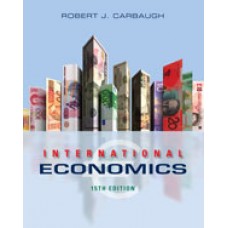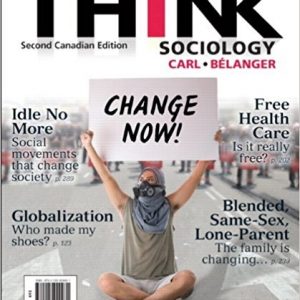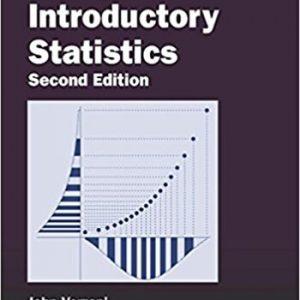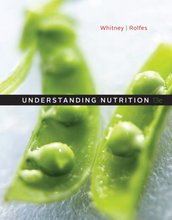This is completed downloadable of Solution Manual for International Economics, 15th Edition

Product Details:
- ISBN-10 : 1285854357
- ISBN-13 : 978-1285854359
- Author: Robert J. Carbaugh
Now in its 15th edition, this proven, market-leading book remains a favorite among readers of all backgrounds for its clear, concise treatment of international trade and finance theory. Using a wealth of contemporary examples and practical applications, INTERNATIONAL ECONOMICS vividly demonstrates the relevance of theory to real-world economic issues and policy questions. Discussions are presented both verbally and graphically, making the book highly accessible even if you have little economics background. As you will soon discover, “If it’s clear, concise, and contemporary, it has to be Carbaugh!”
Table of Content:
- Ch 1: The International Economy and Globalization
- Globalization of Economic Activity
- Waves of Globalization
- The United States as an Open Economy
- Why is Globalization Important?
- Globalization and Competition
- Common Fallacies of International Trade
- Does Free Trade Apply to Cigarettes?
- Is International Trade an Opportunity or a Threat to Workers?
- Backlash against Globalization
- The Plan of This Text
- Summary
- Key Concepts and Terms
- Study Questions
- Part 1: International Trade Relations
- Ch 2: Foundations of Modern Trade Theory: Comparative Advantage
- Historical Development of Modern Trade Theory
- Production Possibilities Schedules
- Trading under Constant-Cost Conditions
- Dynamic Gains from Trade
- Changing Comparative Advantage
- Trading under Increasing-Cost Conditions
- The Impact of Trade on Jobs
- Wooster, Ohio Bears the Brunt of Globalization
- Comparative Advantage Extended to Many Products and Countries
- Exit Barriers
- Empirical Evidence on Comparative Advantage
- Comparative Advantage and Global Supply Chains
- Summary
- Key Concepts and Terms
- Study Questions
- Exploring Further
- Ch 3: Sources of Comparative Advantage
- Factor Endowments as a Source of Comparative Advantage
- Is the Factor-Endowment Theory a Good Predictor of Trade Patterns?
- Skill as a Source of Comparative Advantage
- Economies of Scale and Comparative Advantage
- Overlapping Demands as a Basis for Trade
- Intra-Industry Trade
- Technology as a Source of Comparative Advantage: The Product Cycle Theory
- Dynamic Comparative Advantage: Industrial Policy
- WTO Rules That Illegal Government Subsidies Support Boeing and Airbus
- Government Regulatory Policies and Comparative Advantage
- Transportation Costs and Comparative Advantage
- Summary
- Key Concepts and Terms
- Study Questions
- Exploring Further
- Ch 4: Tariffs
- The Tariff Concept
- Types of Tariffs
- Effective Rate of Protection
- Tariff Escalation
- Outsourcing and Offshore Assembly Provision
- Dodging Import Tariffs: Tariff Avoidance and Tariff Evasion
- Postponing Import Tariffs
- Tariff Effects: An Overview
- Tariff Welfare Effects: Consumer Surplus and Producer Surplus
- Tariff Welfare Effects: Small Nation Model
- Tariff Welfare Effects: Large Nation Model
- Examples of U.S. Tariffs
- How a Tariff Burdens Exporters
- Tariffs and the Poor
- Arguments for Trade Restrictions
- The Political Economy of Protectionism
- Summary
- Key Concepts and Terms
- Study Questions
- Exploring Further
- Ch 5: Nontariff Trade Barriers
- Absolute Import Quota
- Tariff-Rate Quota: A Two-Tier Tariff
- Export Quotas
- Domestic Content Requirements
- Subsidies
- Dumping
- Antidumping Regulations
- Is Antidumping Law Unfair?
- Other Nontariff Trade Barriers
- Summary
- Key Concepts and Terms
- Study Questions
- Ch 6: Trade Regulations and Industrial Policies
- U.S. Tariff Policies before 1930
- Smoot-Hawley Act
- Reciprocal Trade Agreements Act
- General Agreement on Tariffs and Trade
- World Trade Organization
- Trade Promotion Authority (Fast Track Authority)
- Safeguards (The Escape Clause): Emergency Protection from Imports
- Countervailing Duties: Protection against Foreign Export Subsidies
- Antidumping Duties: Protection against Foreign Dumping
- Section 301: Protection against Unfair Trading Practices
- Protection of Intellectual Property Rights
- Trade Adjustment Assistance
- Industrial Policies of the United States
- Industrial Policies of Japan
- Strategic Trade Policy
- Economic Sanctions
- Summary
- Key Concepts and Terms
- Study Questions
- Exploring Further
- Ch 7: Trade Policies for the Developing Nations
- Developing-Nation Trade Characteristics
- Tensions between Developing Nations and Advanced Nations
- Trade Problems of the Developing Nations
- Stabilizing Primary-Product Prices
- The OPEC Oil Cartel
- Aiding the Developing Nations
- Economic Growth Strategies: Import Substitution versus Export Led Growth
- East Asian Economies
- China’s Great Leap Forward
- India: Breaking out of the Third World
- Brazil Takes Off
- Summary
- Key Concepts and Terms
- Study Questions
- Ch 8: Regional Trading Arrangements
- Regional Integration versus Multilateralism
- Types of Regional Trading Arrangements
- Impetus for Regionalism
- Effects of a Regional Trading Arrangement
- The European Union
- Economic Costs and Benefits of a Common Currency: The European Monetary Union
- North American Free Trade Agreement
- Summary
- Key Concepts and Terms
- Study Questions
- Exploring Further
- Ch 9: International Factor Movements and Multinational Enterprises
- The Multinational Enterprise
- Motives for Foreign Direct Investment
- Supplying Products to Foreign Buyers: Whether to Produce Domestically or Abroad
- Country Risk Analysis
- International Trade Theory and Multinational Enterprise
- Japanese Transplants in the U.S. Automobile Industry
- International Joint Ventures
- Multinational Enterprises as a Source of Conflict
- International Labor Mobility: Migration
- Summary
- Key Concepts and Terms
- Study Questions
- Part 2: International Monetary Relations
- Ch 10: The Balance-of-Payments
- Double Entry Accounting
- Balance-of-Payments Structure
- U.S. Balance-of-Payments
- What Does a Current Account Deficit (Surplus) Mean?
- Balance of International Indebtedness
- The Dollar as the World’s Reserve Currency
- Summary
- Key Concepts and Terms
- Study Questions
- Ch 11: Foreign Exchange
- Foreign Exchange Market
- Types of Foreign Exchange Transactions
- Interbank Trading
- Reading Foreign Exchange Quotations
- Forward and Futures Markets
- Foreign Currency Options
- Exchange Rate Determination
- Indexes of the Foreign-Exchange Value of the Dollar: Nominal and Real Exchange Rates
- Arbitrage
- The Forward Market
- Interest Arbitrage, Currency Risk, and Hedging
- Foreign Exchange Market Speculation
- Foreign Exchange Trading as a Career
- Summary
- Key Concepts and Terms
- Study Questions
- Exploring Further
- Ch 12: Exchange Rate Determination
- What Determines Exchange Rates?
- Determining Long Run Exchange Rates
- Inflation Rates, Purchasing-Power-Parity, and Long Run Exchange Rates
- Determining Short Run Exchange Rates: The Asset Market Approach
- Exchange Rate Overshooting
- Forecasting Foreign Exchange Rates
- Summary
- Key Concepts and Terms
- Study Questions
- Exploring Further
- Ch 13: Mechanisms of International Adjustment
- Price Adjustments
- Financial Flows and Interest Rate Differentials
- Income Adjustments
- Disadvantages of Automatic Adjustment Mechanisms
- Monetary Adjustments
- Summary
- Key Concepts and Terms
- Study Questions
- Exploring Further
- Ch 14: Exchange Rate Adjustments and the Balance-of-Payments
- Effects of Exchange Rate Changes on Costs and Prices
- Cost Cutting Strategies of Manufacturers in Response to Currency Appreciation
- Will Currency Depreciation Reduce a Trade Deficit? The Elasticity Approach
- J-Curve Effect: Time Path of Depreciation
- Exchange Rate Pass-Through
- The Absorption Approach to Currency Depreciation
- The Monetary Approach to Currency Depreciation
- Summary
- Key Concepts and Terms
- Study Questions
- Exploring Further
- Ch 15: Exchange Rate Systems and Currency Crises
- Exchange Rate Practices
- Choosing an Exchange Rate System: Constraints Imposed by Free Capital Flows
- Fixed Exchange Rate System
- Floating Exchange Rates
- Managed Floating Rates
- The Crawling Peg
- Currency Manipulation and Currency Wars
- Currency Crises
- Capital Controls
- Increasing the Credibility of Fixed Exchange Rates
- Summary
- Key Concepts and Terms
- Study Questions
- Ch 16: Macroeconomic Policy in an Open Economy
- Economic Objectives of Nations
- Policy Instruments
- Aggregate Demand and Aggregate Supply: A Brief Review
- Monetary and Fiscal Policy in a Closed Economy
- Monetary and Fiscal Policy in an Open Economy
- Macroeconomic Stability and the Current Account: Policy Agreement versus Policy Conflict
- Inflation with Unemployment
- International Economic Policy Coordination
- Summary
- Key Concepts and Terms
- Study Questions
- Ch 17: International Banking: Reserves, Debt, and Risk
- Nature of International Reserves
- Demand for International Reserves
- Supply of International Reserves
- Foreign Currencies
- Gold
- Special Drawing Rights
- Facilities for Borrowing Reserves
- International Lending Risk
- The Problem of International Debt
- Reducing Bank Exposure to Developing Nation Debt
- Debt Reduction and Debt Forgiveness
- The Eurodollar Market
- Summary
- Key Concepts and Terms
- Study Questions
- Glossary
- Index





